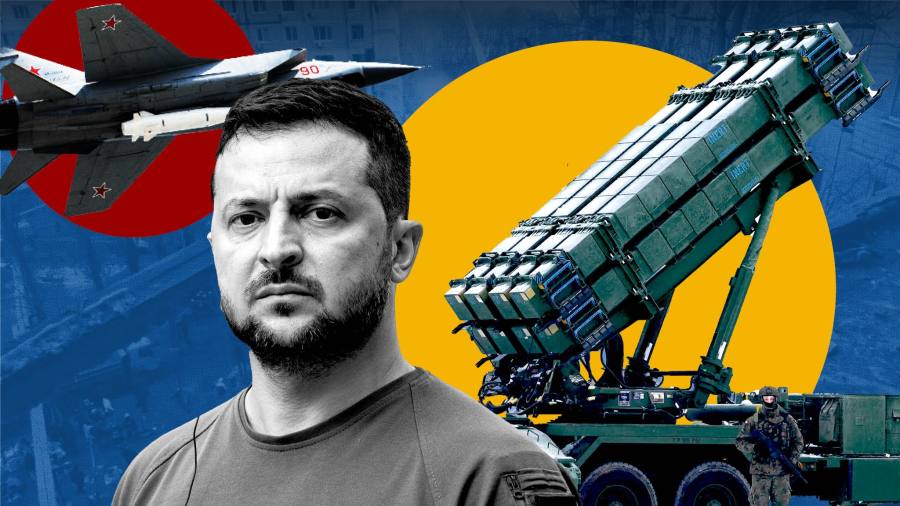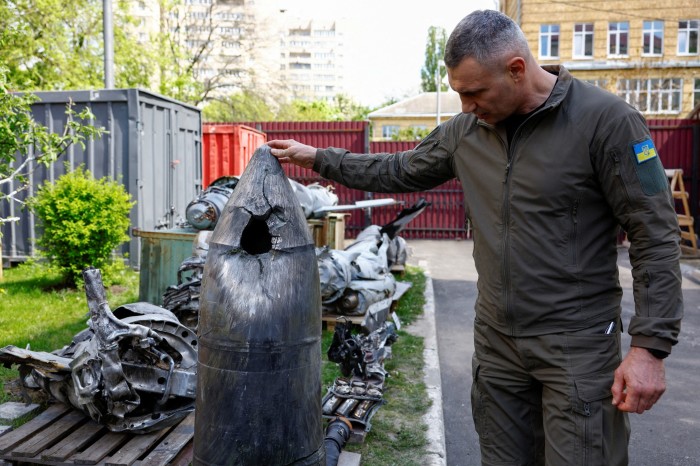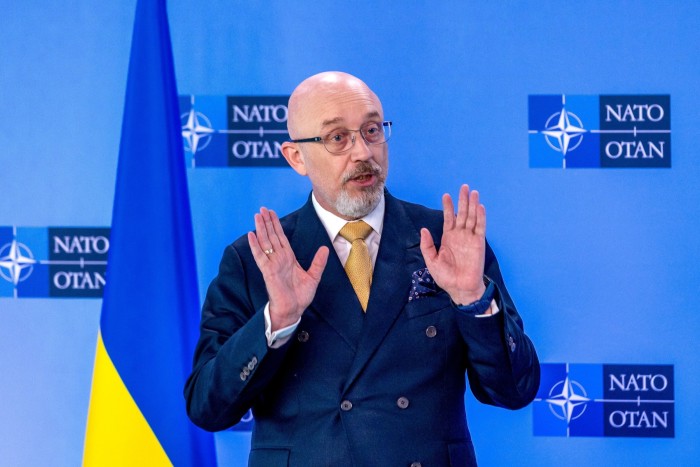
Ukraine’s defence minister Oleksiy Reznikov was meeting US officials when he took a phone call from his top commander. Turning to his American visitors, Reznikov said: “I have good news for you. We downed a Kinzhal.”
The Kinzhal was supposedly a fearsome Russian hypersonic missile which, Vladimir Putin boasted, flew so fast it could not be intercepted. But on that day in May, Ukrainian forces fired a newly acquired Patriot air defence system, one of the most advanced pieces of weaponry supplied so far by the US, proving Putin wrong.
“Fantastic!” Reznikov recalled a US official responding.
The war in Ukraine is the first time that Nato weaponry is being used on a large scale against Russia’s army — after pleas for assistance from President Volodymyr Zelenskyy — and it is giving western militaries invaluable insights into the performance of their kit.
Experts had long suspected the Patriot was capable of shooting down a Kinzhal, but it took the Ukrainian military to demonstrate it. They have since intercepted more than a dozen.
Kyiv’s western allies “can actually see if their weapons work, how efficiently they work and if they need to be upgraded”, Reznikov said in an interview.
“For the military industry of the world, you can’t invent a better testing ground,” he added.

To protect its skies from Russian missiles, Ukraine has also received US-Norwegian Nasams air defences as well as Germany’s newly developed Iris-T. It is the first time all the different Nato-grade systems have been put to the test together.
“The systems work together . . . It’s also very important for them to know,” Reznikov said.
Artillery including US M777 howitzers, German Panzerhaubitze 2000s, French Caesars and Polish Krabs that are more accurate than Russian canon, have been softening the ground for Ukraine’s infantry and repelling Russian advances.
A western artillery system is like a “Mercedes-Benz” compared with a Russian Soviet-era car, but Nato-grade weaponry has also shown its own shortcomings, according to Petro Pyatakov, an arms industry consultant and retired colonel.
“It has become apparent during operations that these systems were not intended for such intense warfare” in which Russia’s artillery machine fires nonstop and indiscriminately. “All of them require a break . . . after two or three minutes of firing at maximum speed, which is not the case with Soviet guns,” Pyatakov said.
Pyatakov confirmed that there was an “active interest from western artillery manufacturers in receiving feedback from Ukrainian gunners . . . to eliminate shortcomings”.
“It’s not just the Ukrainians who are learning how to fight a modern, high-intensity war. The Russians are as well,” said a western defence adviser.
“There is a risk that [the west] will get left behind when it comes to battlefield tactics unless we absorb the lessons to be learnt with some urgency,” the adviser said.
GPS-guided munitions for artillery, as well as multiple-launch rocket systems such as the US Himars, were “highly accurate.” But, Reznikov added, Russia’s strong radio-electronic systems were finding ways to jam them.
“The Russians come up with a countermeasure, we inform our partners and they make a new countermeasure against this countermeasure,” Reznikov said.

The same approach is deployed to improve the performance of surveillance and strike drones, which are being used on an unprecedented scale but are also frequently jammed.
“It’s like a constant pendulum. This is a war of technology,” Reznikov said.
Jack Watling, an expert at the Royal United Services Institute, a London-based think-tank, said the west had learnt a great deal about how Russian systems operated “at a tactical level, and they have observed the impact of [drones] and other systems on broad-scale combat operations”.
“On the other hand, the west has exposed a lot of its own capabilities to Russia and China, and therefore will have to change the ways that some of its equipment work in order to retain competitive advantage,” Watling said.
A German defence contractor said they had learnt “really a lot from the soldiers in Ukraine” who once they notice something, “suggest it and our software engineers sit down so that they can have an update”.
The contractor noted that at the beginning of the invasion, the perception was that Ukraine would have to defend itself against huge Russian air raids. But the reality on the ground has been very different.
“It becomes a question of economics — [the Russians] send over a €25,000 drone and you fire a half-a-million defence missile, so it becomes economically untenable, especially when you don’t have an unlimited supply.”
To make do with scarce supplies, Ukraine and its allies have been innovative. They have mounted missiles originally designed for Nato aircraft on Ukraine’s Soviet fighter jets. UK Harpoon anti-ship missiles, normally fired from vessels, have been fitted to jeeps to more easily evade Russian strikes.
Aiding this improvisation is an easy exchange of information. Top Ukrainian defence officials can call up their contacts in western governments or arms contractors while Ukrainian soldiers can contact the foreign instructors who trained them to use foreign weapons.
Watling, who is involved in the feedback process, said that in addition to the “formalised process . . . you’ve got lots of those informal loops”.
“The problem is that a lot of the lessons that come from those individual sort of conversations don’t give you data,” he said, adding that Ukraine’s command needed to be more systematic in data collection.
Reznikov said maintenance contracts had recently been inked with the UK defence company Babcock International, France’s Nexter Systems which produces artillery, and Germany’s Rheinmetall — best known for making the Leopard tanks that Ukraine’s forces have recently started using.
Last autumn, Ukraine adopted Nato’s computerised Logfas database. It gives Kyiv and its allies data on what weaponry is operational, what needs repairs and what has to be replaced completely.
“This is all additional proof that we are powerful partners who are de facto a Nato country,” Reznikov said.
“Everyone is watching closely. And not only India. China too . . . Everyone, even those who bought weapons from [Russia], will watch carefully,” Reznikov said.
Li Hui, China’s special representative for Eurasian affairs, was visiting Kyiv in mid-May, by which time Ukraine had allegedly downed several Kinzhals. However, Ukrainian diplomats said the Chinese envoy did not believe that US-made Patriots had intercepted Russia’s hypersonic missiles.
“I proposed that if there are doubts, we are ready to provide proof,” Reznikov said.
Li left Kyiv without viewing the evidence, Reznikov added.
The Chinese embassy in Kyiv did not respond to a request for comment.
Additional reporting by John Paul Rathbone in London and Patricia Nilsson in Frankfurt